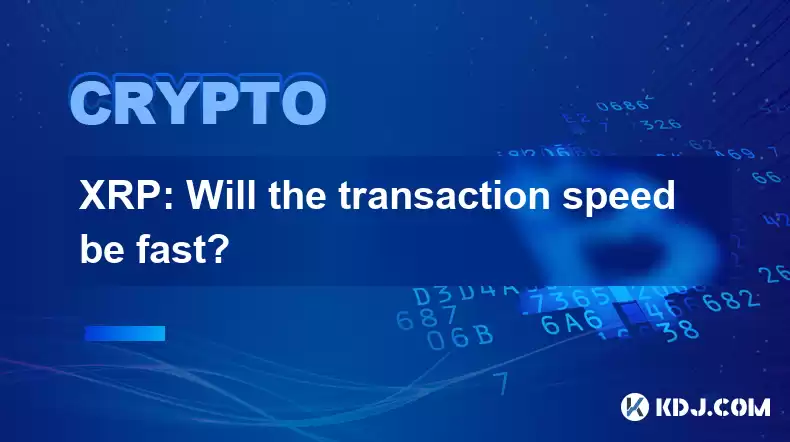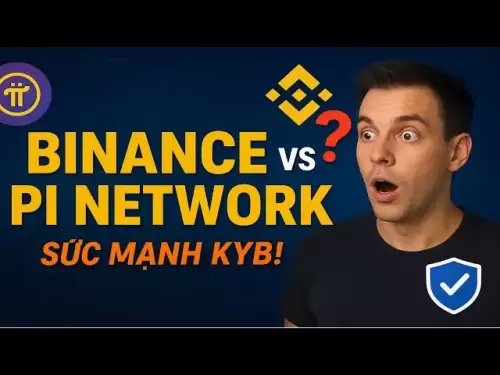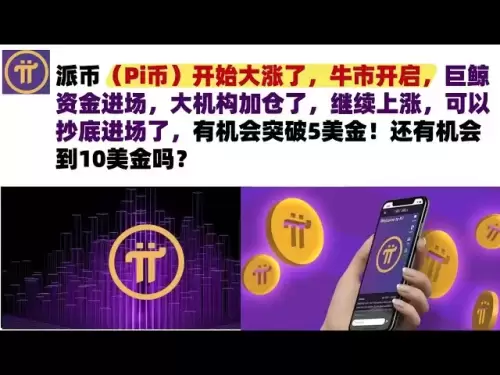-
 Bitcoin
Bitcoin $116400
-0.36% -
 Ethereum
Ethereum $4033
3.40% -
 XRP
XRP $3.302
-1.26% -
 Tether USDt
Tether USDt $1.000
-0.02% -
 BNB
BNB $796.1
1.67% -
 Solana
Solana $177.8
1.89% -
 USDC
USDC $0.9999
0.00% -
 Dogecoin
Dogecoin $0.2314
4.09% -
 TRON
TRON $0.3381
0.14% -
 Cardano
Cardano $0.7989
1.22% -
 Stellar
Stellar $0.4496
-1.84% -
 Chainlink
Chainlink $20.42
9.42% -
 Hyperliquid
Hyperliquid $41.17
0.88% -
 Sui
Sui $3.914
3.77% -
 Bitcoin Cash
Bitcoin Cash $584.7
1.52% -
 Hedera
Hedera $0.2632
-0.54% -
 Avalanche
Avalanche $24.09
3.40% -
 Ethena USDe
Ethena USDe $1.001
-0.02% -
 Litecoin
Litecoin $123.2
1.33% -
 Toncoin
Toncoin $3.318
-0.04% -
 UNUS SED LEO
UNUS SED LEO $8.984
-0.05% -
 Shiba Inu
Shiba Inu $0.00001323
2.85% -
 Uniswap
Uniswap $10.90
4.41% -
 Polkadot
Polkadot $3.999
3.34% -
 Dai
Dai $1.000
0.01% -
 Cronos
Cronos $0.1630
9.64% -
 Bitget Token
Bitget Token $4.484
0.82% -
 Monero
Monero $272.4
2.44% -
 Pepe
Pepe $0.00001173
6.03% -
 Aave
Aave $290.8
2.88%
XRP: Will the transaction speed be fast?
Harnessing a unique consensus protocol and on-ledger capabilities, XRP boasts lightning-fast transaction processing with minimal latency, making it ideal for fast-paced payments and financial transactions.
Feb 06, 2025 at 05:06 pm

Key Points:
- XRP's unique consensus protocol allows for ultra-fast transaction processing.
- XRP Ledger's scalability enables high transaction throughput with minimal latency.
- The use of validators and consensus nodes ensures efficient settlement and validation.
- On-ledger capabilities, such as payment channels and atomic swaps, further enhance transaction speed.
Article:
XRP: Ultra-Fast Transaction Speed Explained
XRP, the native cryptocurrency of the XRP Ledger (XRPL), is renowned for its exceptionally fast transaction processing capabilities. This speed is essential for a digital currency intended for global payments and cross-border transfers. Several factors contribute to XRP's lightning-fast performance:
1. Unique Consensus Protocol:
Unlike many other cryptocurrencies that employ proof-of-work or proof-of-stake mechanisms, XRP utilizes the XRP Ledger Consensus Protocol (XLCP). XLCP is a distributed ledger technology that employs a unique consensus algorithm to validate transactions. This algorithm eliminates the need for time-consuming mining processes, enabling transactions to be confirmed within just a few seconds.
2. High Scalability:
The XRP Ledger is designed to handle a high volume of transactions without experiencing congestion or delays. Its architecture employs a distributed network of trusted validators who work in parallel to process transactions efficiently. As the network grows, so does its capacity, ensuring scalability and maintaining consistent transaction speed.
3. Efficient Settlement and Validation:
The XRP Ledger's validators play a crucial role in transaction processing. They follow a standardized set of rules to verify and approve transactions. Once a transaction is validated by a majority of validators, it is considered settled and becomes immutable. This streamlined process contributes to rapid transaction execution.
4. On-Ledger Capabilities:
In addition to traditional transactions, the XRP Ledger supports on-ledger capabilities that further enhance transaction speed.
- Payment Channels: Payment channels allow users to establish direct connections between themselves and conduct multiple transactions off-ledger. This eliminates intermediaries and reduces the number of network interactions, resulting in near-instantaneous transactions.
- Atomic Swaps: Atomic swaps facilitate direct exchanges of different cryptocurrencies without the need for a third-party exchange. By leveraging the XRPL's native cross-border payment capabilities, atomic swaps enable seamless and fast cross-chain transactions.
FAQs:
Q: How fast are XRP transactions compared to other cryptocurrencies?
A: XRP transactions are significantly faster than most other cryptocurrencies. While Bitcoin transactions can take hours or even days, XRP transactions are typically confirmed within a few seconds.
Q: What factors influence XRP transaction speed?
A: Factors such as network congestion, transaction size, and the number of validators involved can impact transaction speed. However, the XRPL's inherent design features and on-ledger capabilities enable consistently fast transaction processing.
Q: How does XRP's transaction speed benefit its use cases?
A: Fast transaction speed is essential for XRP's intended use cases, particularly cross-border payments and financial services. It allows for near-real-time settlement of transactions, reducing processing times and associated costs.
Q: What measures are in place to maintain transaction speed on the XRP Ledger?
A: The XRP Ledger's ongoing development and upgrades focus on enhancing its scalability, efficiency, and transaction processing capabilities. The addition of new validators and optimization of the consensus algorithm contribute to maintaining and improving transaction speed.
Disclaimer:info@kdj.com
The information provided is not trading advice. kdj.com does not assume any responsibility for any investments made based on the information provided in this article. Cryptocurrencies are highly volatile and it is highly recommended that you invest with caution after thorough research!
If you believe that the content used on this website infringes your copyright, please contact us immediately (info@kdj.com) and we will delete it promptly.
- Shiba Inu (SHIB) in the Crypto Landscape: Community, Trends, and Future Outlook
- 2025-08-09 20:30:12
- Solana, Unilabs, and Social Trends: Decoding the Crypto Buzz
- 2025-08-09 21:10:12
- Dogecoin, Meme Coins, and Layer Brett: Chasing the Next 100x
- 2025-08-09 20:50:12
- Crypto Presales in 2025: Are They Set to Outperform Launches?
- 2025-08-09 20:55:15
- Solana, Cardano, and Shiba Inu: Navigating the Crypto Landscape Beyond the Hype
- 2025-08-09 21:15:27
- Lasers in Modern Warfare: Iron Beam and the Future of Defense
- 2025-08-09 20:30:12
Related knowledge

What is Ethereum’s Slashing mechanism and how to punish malicious behavior?
Feb 20,2025 at 03:08am
Key PointsOverview of slashingDifferent types of slashing in EthereumIncentives and consequences of slashingIdentifying and reporting slashed validato...

What is the verifier node of Ethereum and how to become a verifier?
Feb 19,2025 at 06:00pm
The Verifier Node of Ethereum: A Comprehensive GuideKey Points:What is a Verifier Node?How to Become a Verifier NodeResponsibilities and Rewards of a ...

What is Ethereum’s staking, and how to participate and earn money?
Feb 19,2025 at 04:37pm
Key Points:Understanding Ethereum's Staking MechanismSteps to Participate in StakingBenefits and Rewards of StakingSecurity and Risk ConsiderationsTec...

What is Ethereum’s DAO (Decentralized Autonomous Organization) and how does it work?
Feb 20,2025 at 03:12am
Key PointsDefinition and Structure of a DAOGovernance and Decision-Making in DAOsBenefits and Use Cases of DAOsChallenges and Limitations of DAOsWhat ...

What is Ethereum's multi-signature wallet and how to improve security?
Feb 20,2025 at 02:18pm
Key Points:Understanding the Concept of a Multi-Signature WalletBenefits and Drawbacks of Multisig WalletsRequirements for Setting Up a Multisig Walle...

What is Ethereum's oracle and how to provide data for smart contracts?
Feb 21,2025 at 01:30am
Key Points:Understanding the concept of oracles in EthereumExploring different types of oraclesDetailed guide on how to provide data for smart contrac...

What is Ethereum’s Slashing mechanism and how to punish malicious behavior?
Feb 20,2025 at 03:08am
Key PointsOverview of slashingDifferent types of slashing in EthereumIncentives and consequences of slashingIdentifying and reporting slashed validato...

What is the verifier node of Ethereum and how to become a verifier?
Feb 19,2025 at 06:00pm
The Verifier Node of Ethereum: A Comprehensive GuideKey Points:What is a Verifier Node?How to Become a Verifier NodeResponsibilities and Rewards of a ...

What is Ethereum’s staking, and how to participate and earn money?
Feb 19,2025 at 04:37pm
Key Points:Understanding Ethereum's Staking MechanismSteps to Participate in StakingBenefits and Rewards of StakingSecurity and Risk ConsiderationsTec...

What is Ethereum’s DAO (Decentralized Autonomous Organization) and how does it work?
Feb 20,2025 at 03:12am
Key PointsDefinition and Structure of a DAOGovernance and Decision-Making in DAOsBenefits and Use Cases of DAOsChallenges and Limitations of DAOsWhat ...

What is Ethereum's multi-signature wallet and how to improve security?
Feb 20,2025 at 02:18pm
Key Points:Understanding the Concept of a Multi-Signature WalletBenefits and Drawbacks of Multisig WalletsRequirements for Setting Up a Multisig Walle...

What is Ethereum's oracle and how to provide data for smart contracts?
Feb 21,2025 at 01:30am
Key Points:Understanding the concept of oracles in EthereumExploring different types of oraclesDetailed guide on how to provide data for smart contrac...
See all articles

























































































